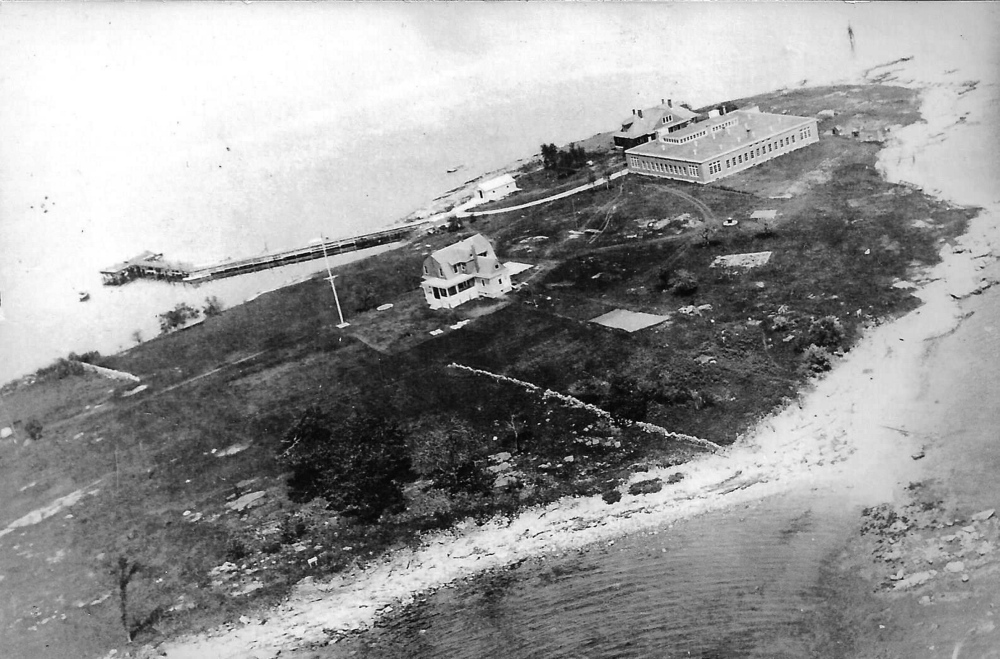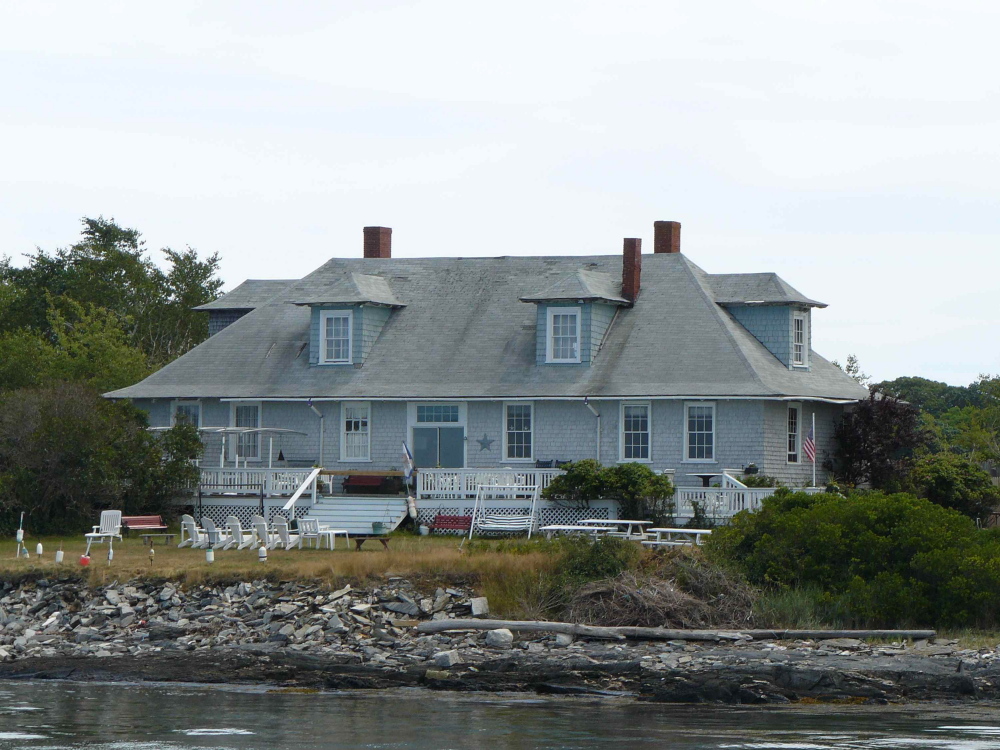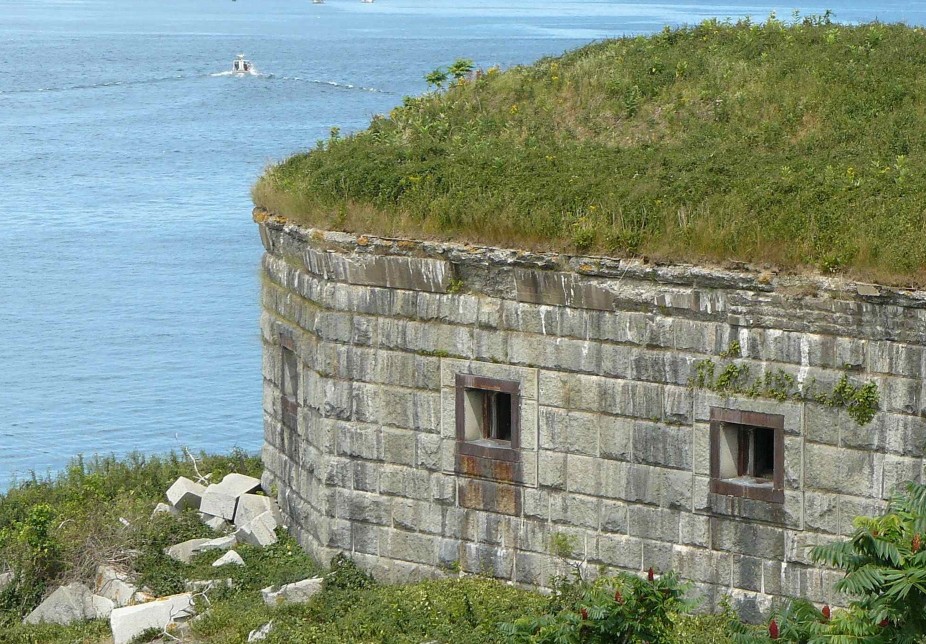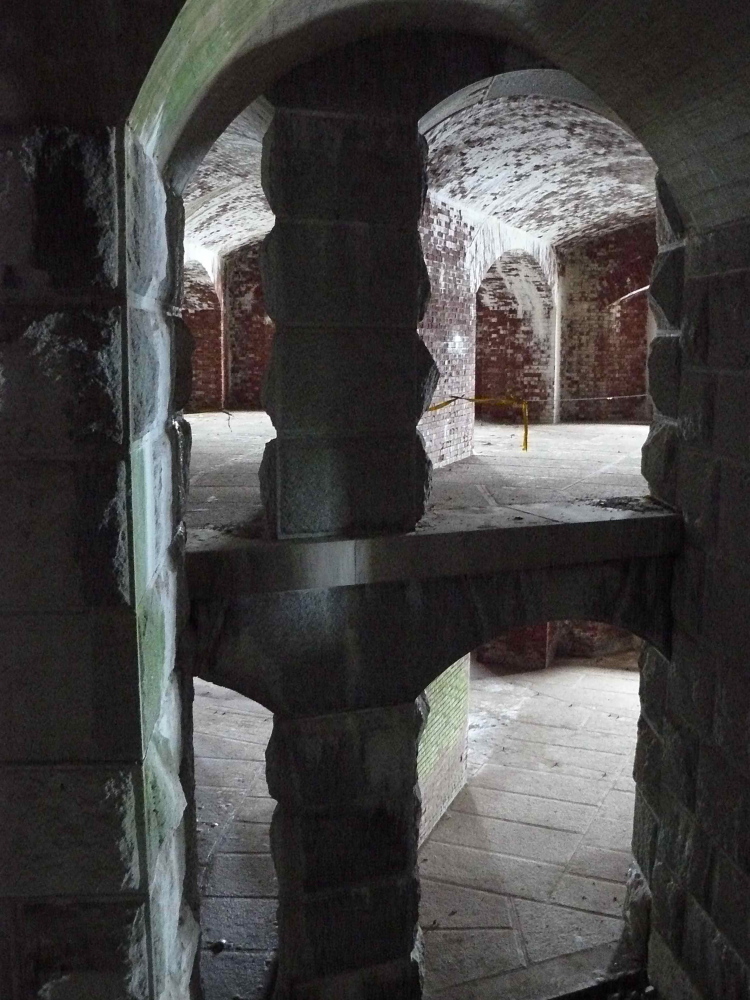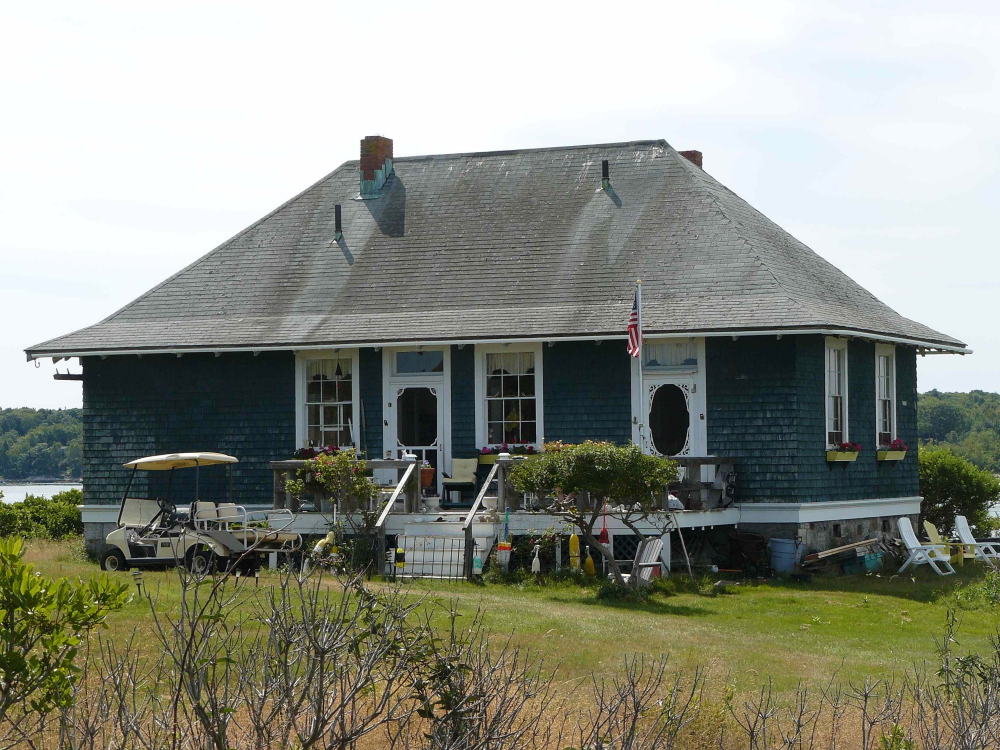Over the centuries, House Island in Casco Bay has served as a military fortress, a thriving fish processing center, a federal station for quarantined immigrants and a venue for corporate retreats. Now the new owner is planning the next chapter for the island: site of luxury vacation homes.
“I think a very low-density residential outcome is what we are looking for,” said Portland developer Michael Scarks. He bought the northeast half of the 24-acre island on May 29 for $2.5 million, said Tony McDonald of CBRE|The Boulos Co. and is now in the process of buying the other half for an undisclosed price.
Scarks said he will provide limited public access to Fort Scammell, built in 1808 on the island’s western end to defend Portland Harbor’s main shipping channel. But he won’t rule out demolishing the island’s other three buildings, all built in 1907 when the federal government set up an immigration quarantine station to process thousands of immigrants arriving from Europe. The station was closed in 1936.
Preservationists are pleased that Scarks will protect the fort, but are upset at the prospect of losing the three buildings – a former detention barracks, a home for the public health officer and a small hospital that had room for 12 patients and a nurse. Scarks said the fate of the three buildings will likely be determined by market demand for the historic homes versus the contemporary homes he envisions for elsewhere on the island.
FAMILY OWNED ISLAND SINCE 1954
Demolishing the buildings and replacing them with a “large-scale” development would change the character of Portland Harbor because the island is so prominent due to its location between Peaks Island and the entrance of Portland Harbor, said Hilary Bassett, executive director of Greater Portland Landmarks.
“It’s right in the middle of the harbor,” she said. “It pretty much defines Portland Harbor.”
She said preservationists can work with Scarks to find tax credits for historic preservation and conservation easements if he’s interested.
Scarks has yet to apply for any permits, but a backhoe began clearing debris on the island last month. Some of the debris includes the ruins of a large, 1½-story brick building built between 1917 and 1920 that served as a detention center for more than 600 people. The building was torn down around 1960.
The seller is Hall Cushing Jr., whose family had owned the island since 1954. Cushing had operated House Island Lobster Bakes and Tours, a business based on Portland’s waterfront that offered catered lobster bakes and group tours of the island. Public access was otherwise prohibited.
Cushing said preservation groups had their chance to buy the island but did not come up with the money. As far as he is concerned, Scarks can do whatever he wants with the property.
“If you own it, you should be able to do with it as you see fit,” he said. “You want to protect it, you buy it.”
A LOCATION WITH A LONG HISTORY
A lot of history has happened on these 24 acres.
Since it was first built in 1808, the fort has been rebuilt and modified several times to keep up with changing military technology. Originally made with earth and brick, the fort was rebuilt before the Civil War when two granite bastions were added.
Of all the forts in Casco Bay, Fort Scammell is the only one to have been involved in battle. In 1813, soldiers at the fort shot at British privateers who were stealing a private sloop. The British fired back, but nobody was injured, said Ken Thompson Jr., a Portland historian who has been digging at the fort to expose the 1808 brick wall. For much of the 1800s, two Portland fishing families used the island to cut, salt and dry groundfish, mostly cod. The fish was placed on drying racks and repeatedly turned, Cushing said. One year, 3 million pounds of cod was salted and cured on the island, he said.
In 1905, the government bought the island to use as an immigration station. Stations also were built in other large cities on the East Coast, including Boston and New York. Immigrants arriving in Portland would travel westward by rail throughout the United States and Canada.
‘THE ELLIS ISLAND OF THE NORTH’
Immigrants came from all over Europe to escape war and famine. Many were drawn to the Northeast, where mills and factories were humming and in constant need of workers. Some immigrants were sent back because they were judged to be unfit, or lacked documents, or exceeded immigration quotas.
In one incident on House Island, a Russian man who was put on a ship bound for Europe jumped overboard into the bay, attempting to kill himself rather than be separated from his family, said Jo Israelson, an artist who is creating a multimedia exhibit about the immigration station for the Maine Jewish Museum. She said a local resident jumped into the water and saved the man’s life.
Many of the arrivals were Jewish immigrants from Russia. Jewish women in Portland built a kosher kitchen on the island for the immigrants, she said.
Israelson said not much else is known about the immigration station. She is worried that Scarks will demolish artifacts and historic buildings that tell the story of what happened there.
“It was the Ellis Island of the north,” she said. “It’s a piece of history. If we can’t save the island, per se, we have to learn as much as we can. Once it’s gone, it’s gone.”
Send questions/comments to the editors.


